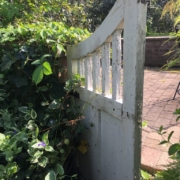HISTORIC GARDEN WEEK 2016: RIVERVIEW FARM ALONG THE JAMES RIVER
A tip of the hat to Susan Robertson, who texted me yesterday afternoon to tell me to jump in my car and drive out to see Riverview Farm, on tour for the Garden Club of Virginia’s Historic Garden Week. At that moment, I was struggling with writing another Garden Week post, and it just wasn’t working. Happy for a diversion, I texted back, “yes ma’am” and took off. This post is a much too superficial and quick post about a fascinating, inspiring, beautiful and significant working farm along the James River.
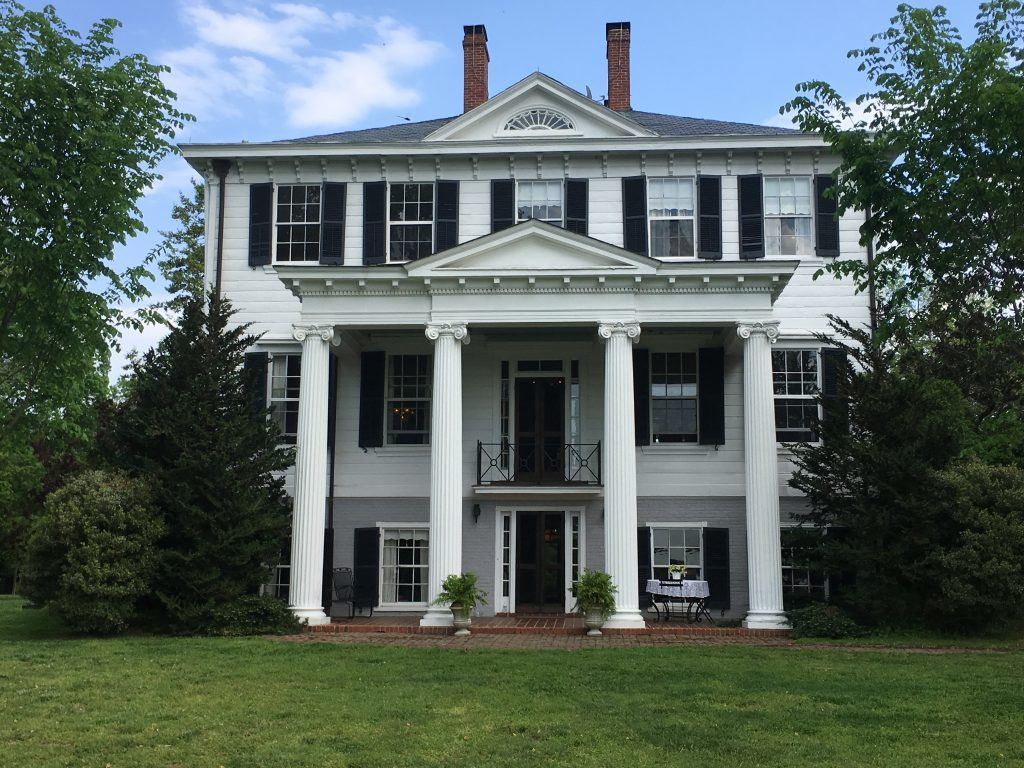
The farm’s Greek-revival house was built in 1860 (the original home burned down) by John Pleasant Royall and his wife, Mary Howell Douthat. Above is the west facade, facing the river. Below is the east facade.
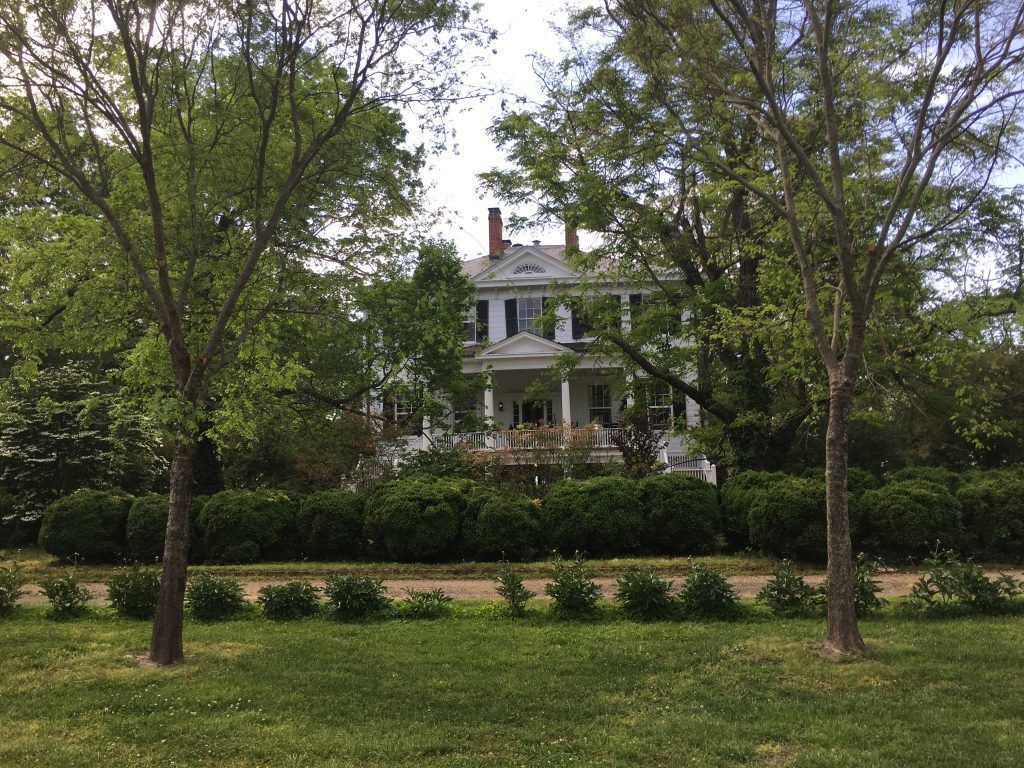
Looking east from the house is the largest Boxwood (below) I’ve ever seen.
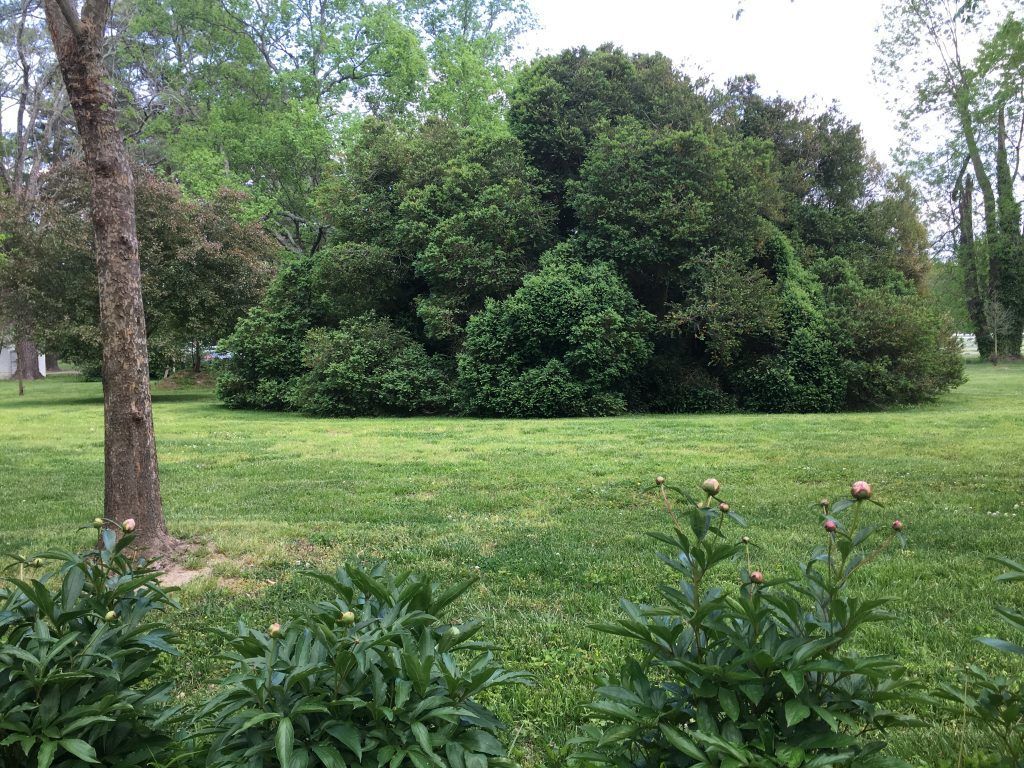 I couldn’t believe this ginormous plant was born of one shrub, so I entered the Boxwood forest to check it out (below). It appears that it is, in fact, the outgrowth from one plant. Wow, what a time the Nordt kids must have playing beneath this canopy.
I couldn’t believe this ginormous plant was born of one shrub, so I entered the Boxwood forest to check it out (below). It appears that it is, in fact, the outgrowth from one plant. Wow, what a time the Nordt kids must have playing beneath this canopy.
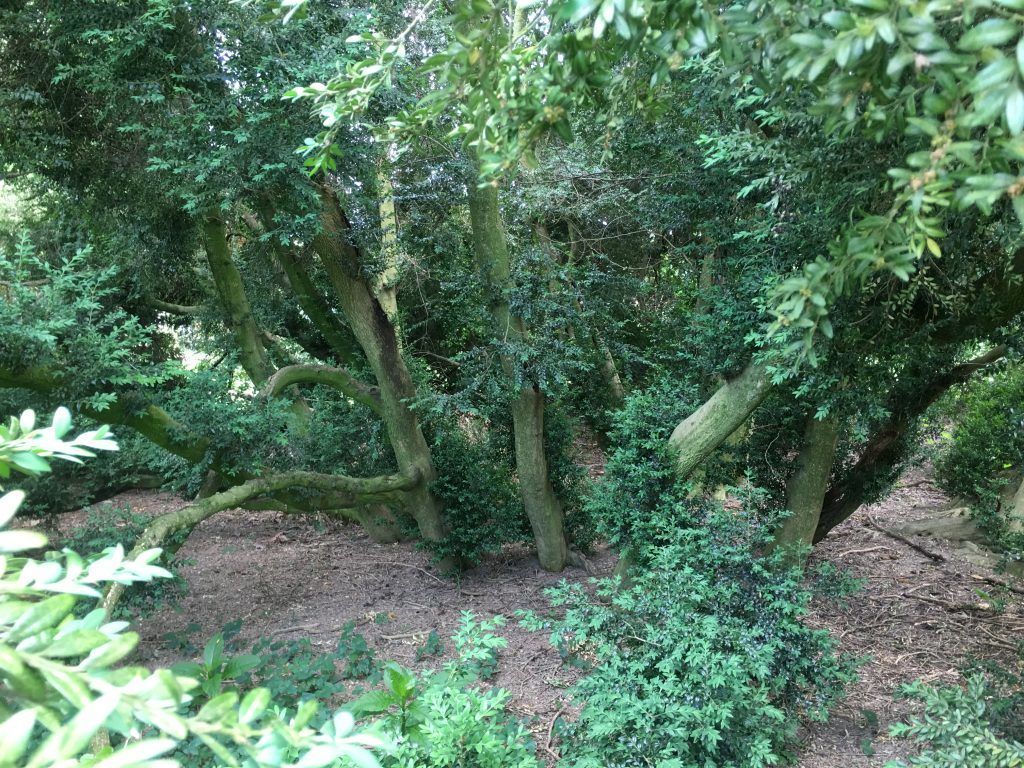
A Charles Gillette garden was installed along the riverfront in 1927.
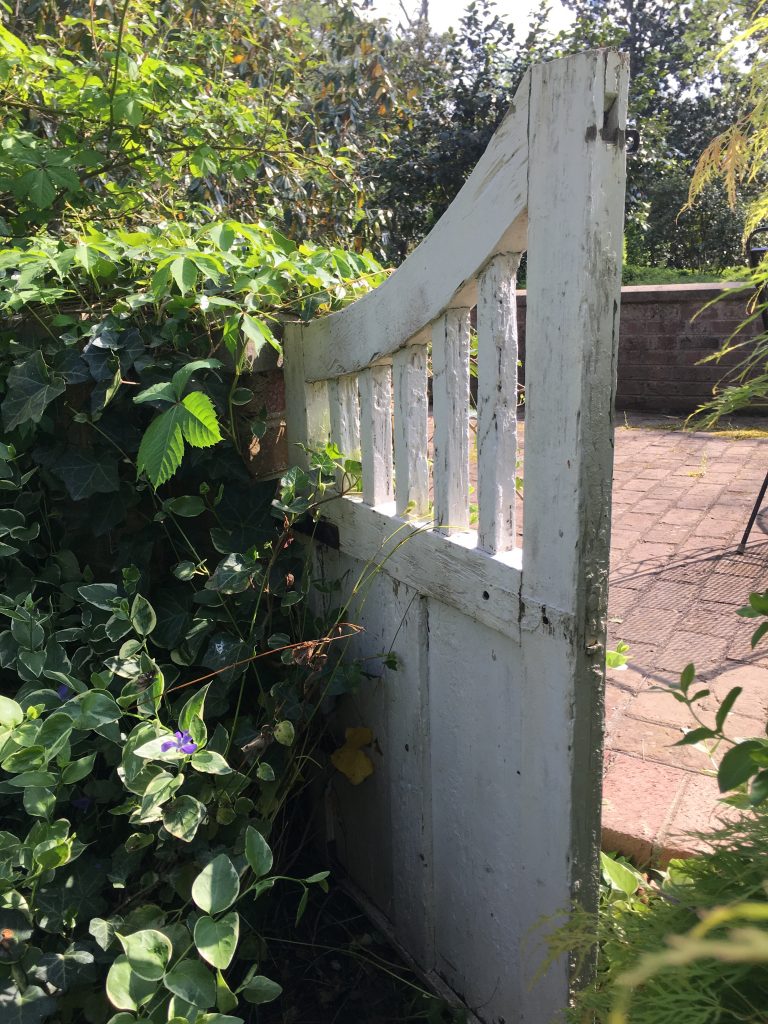
A boxwood parterre and brick walkways are enclosed within a brick serpentine wall.
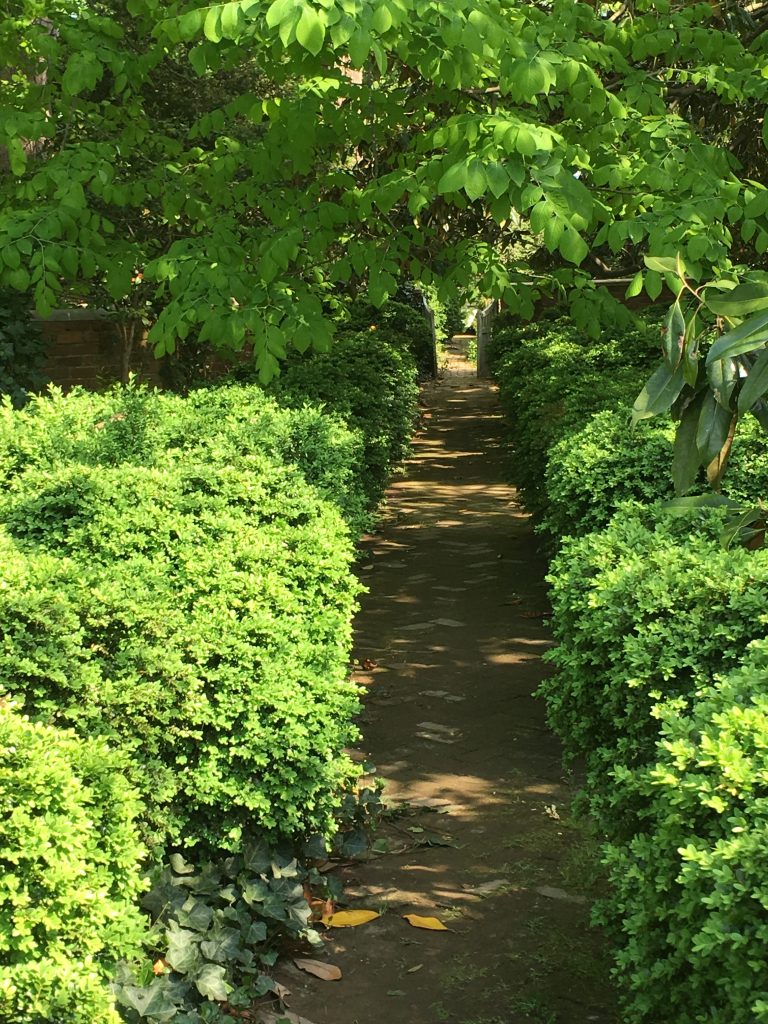 I ran into the Nordts while walking the grounds, and learned that Bill is crazy for trees. How lucky for Riverview Farm that he is! The property contains many old native specimens, such as the Yellowwood (Cladrastis kentukea), below.
I ran into the Nordts while walking the grounds, and learned that Bill is crazy for trees. How lucky for Riverview Farm that he is! The property contains many old native specimens, such as the Yellowwood (Cladrastis kentukea), below.
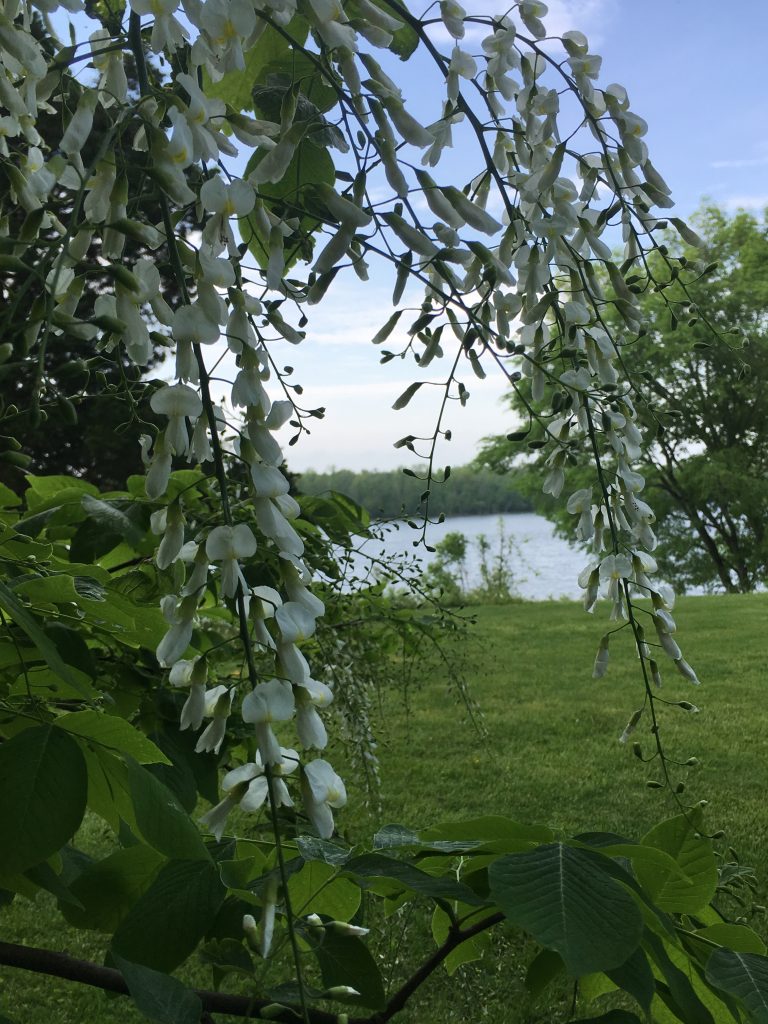 The Nordts have planted more Yellowwood, as well as other native species, including Fringe Tree (Chionanthus virginicus) and River Birch (Betula nigra), below. He gets most of his trees from Bremo Trees, a fabulous nursery on another historic piece of land, further west along the James near Fork Union.
The Nordts have planted more Yellowwood, as well as other native species, including Fringe Tree (Chionanthus virginicus) and River Birch (Betula nigra), below. He gets most of his trees from Bremo Trees, a fabulous nursery on another historic piece of land, further west along the James near Fork Union.
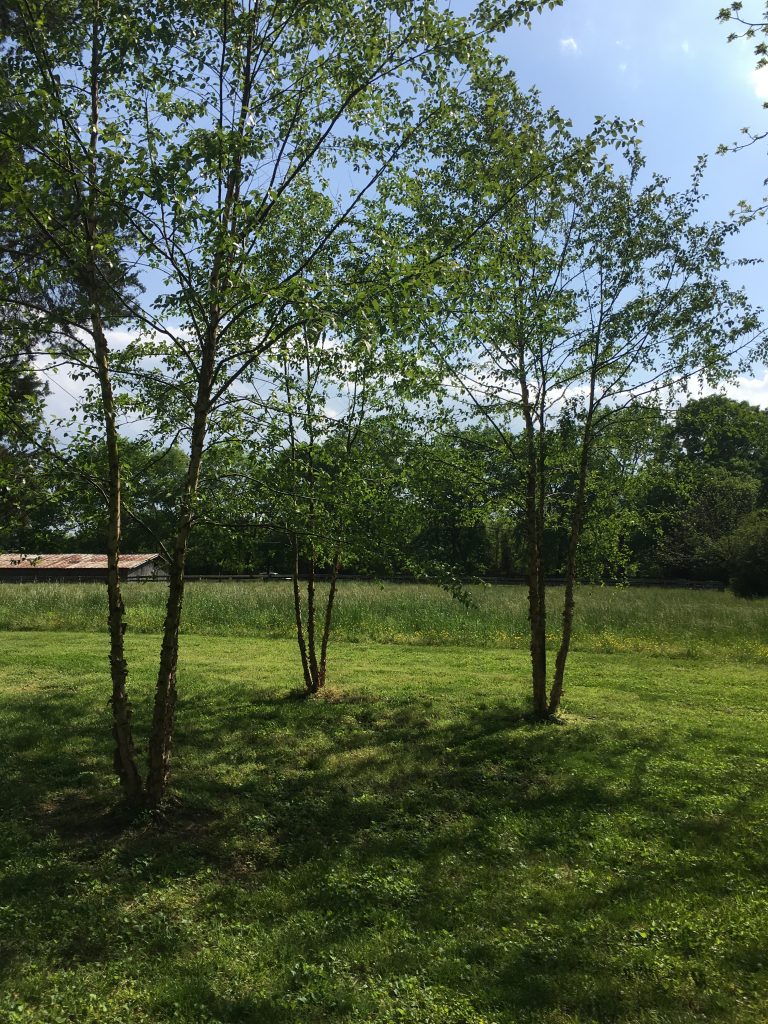
As Bill continues to populate his farm with native trees, the invasives that plague the Virginia landscape work hard to overtake the natives along the river bank. Below, Tree of Heaven (Ailanthus altisssima) and Multiflora Rose (Rosa multiflora) muscle their way onto the scene.
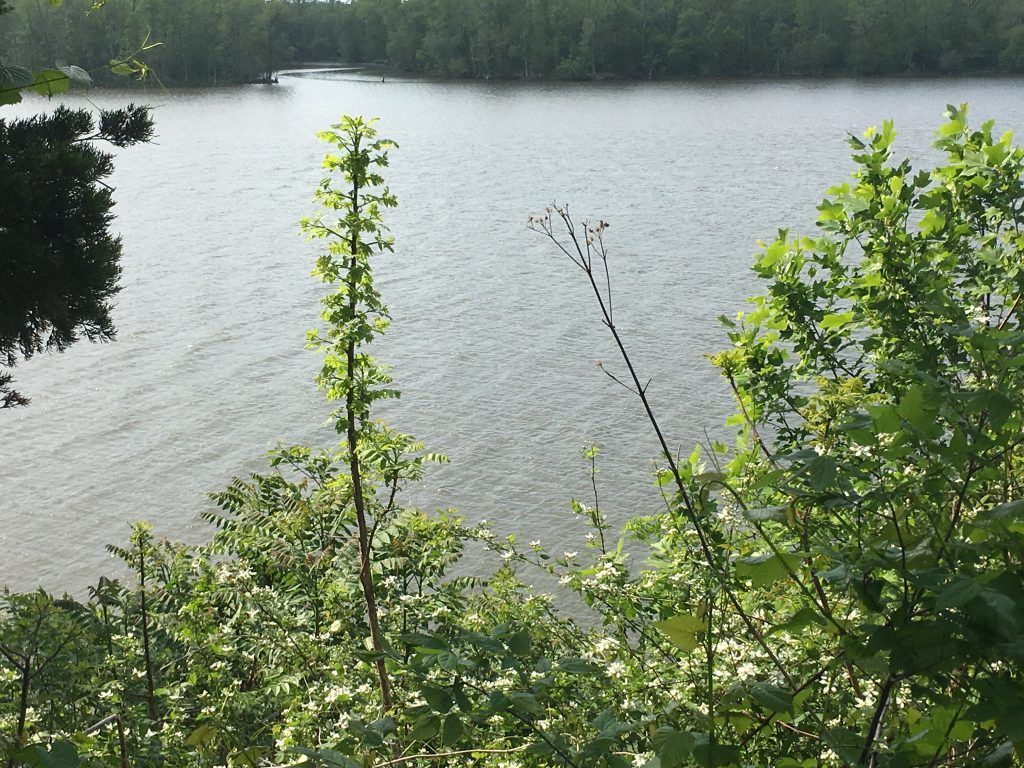
Both of those plants are in the Top 10 of invasive species that the James River Park Invasives Task Force, of which I’m a member, is working to control. For those interested in tackling the invasives in the park, many volunteer opportunities are posted on the brand-new website.
When the kids get tired of playing under the canopy of the Boxwood, they can climb into the canopy of this Green Ash (Fraxinus pennsylvanica) where the penultimate tree house awaits them.
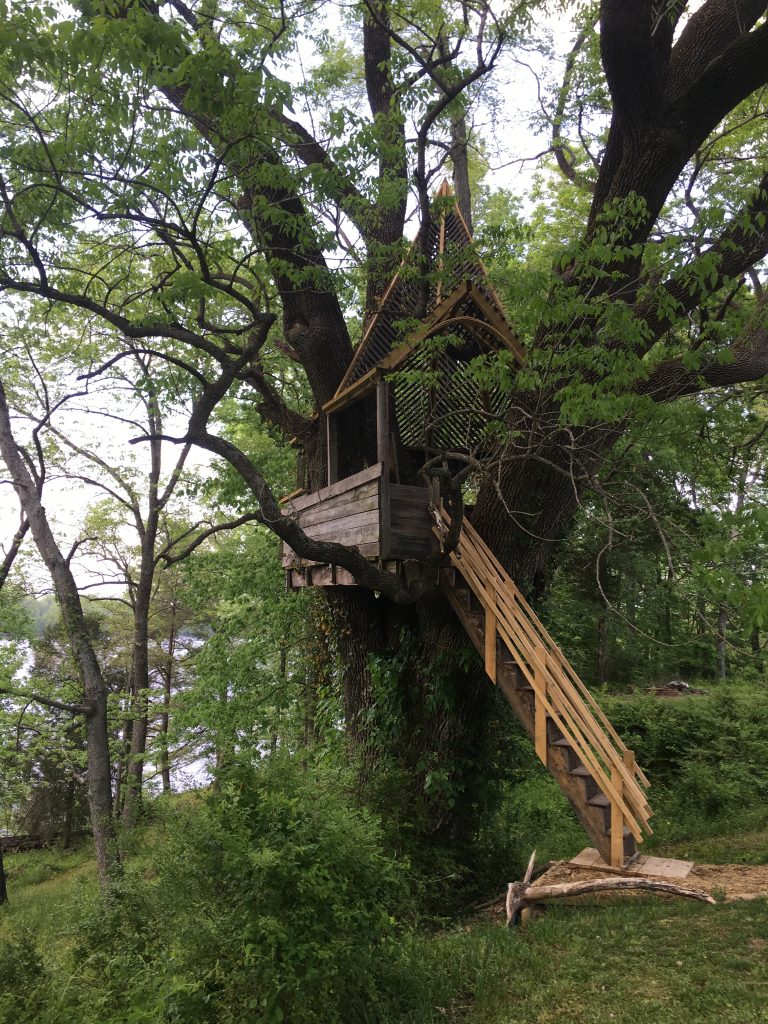 During last year’s Garden Week, I did a blog post on Westover Plantation, and was struck by the Erda family’s connection to the land, the history, and the natural beauty surrounding them. As today’s kids suffer from a nature deficit, these kids spend their days exploring, discovering, soaking in beauty, and putting in good old fashioned labor.
During last year’s Garden Week, I did a blog post on Westover Plantation, and was struck by the Erda family’s connection to the land, the history, and the natural beauty surrounding them. As today’s kids suffer from a nature deficit, these kids spend their days exploring, discovering, soaking in beauty, and putting in good old fashioned labor.
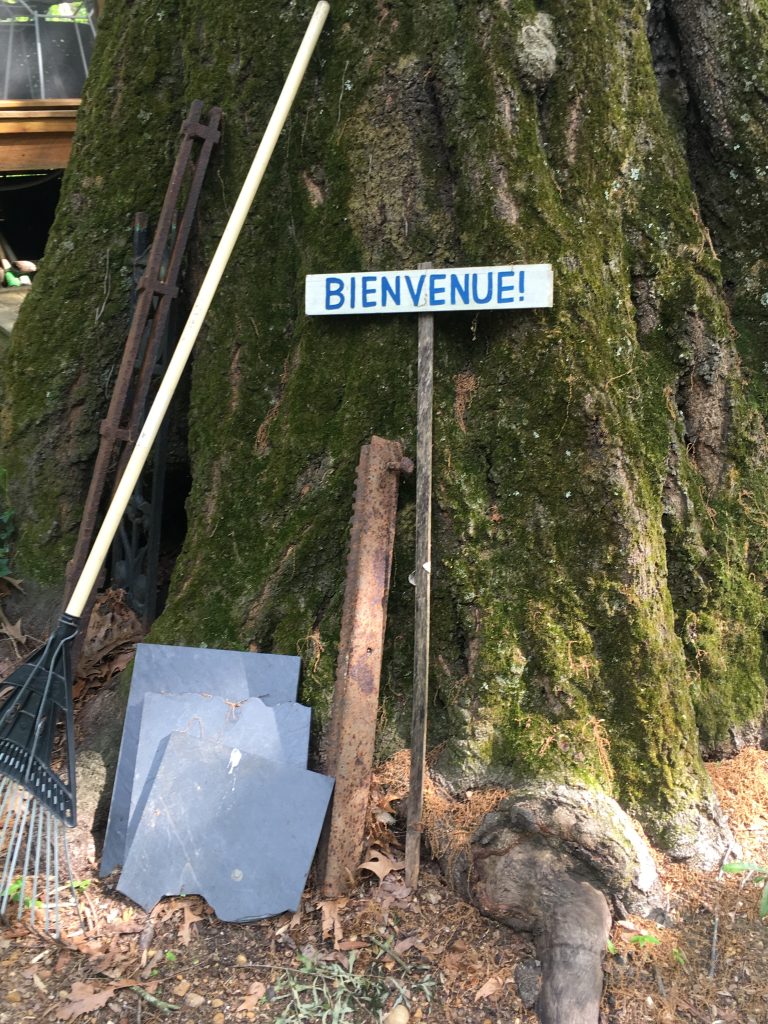
I was reminded of this when reading the Nordt Family Farm website, in which Dianne Nordt writes, “So now I’m a weaver, living on a farm, raising kids and sheep. Together with my incredible husband, we manage an old house and a 400 acre farm on the banks of the James River in Charles City County, Virginia. I feel so fortunate to live my dream, to stay at home with my kids, and to practice the craft that I love to my core.”
About that weaving . . .
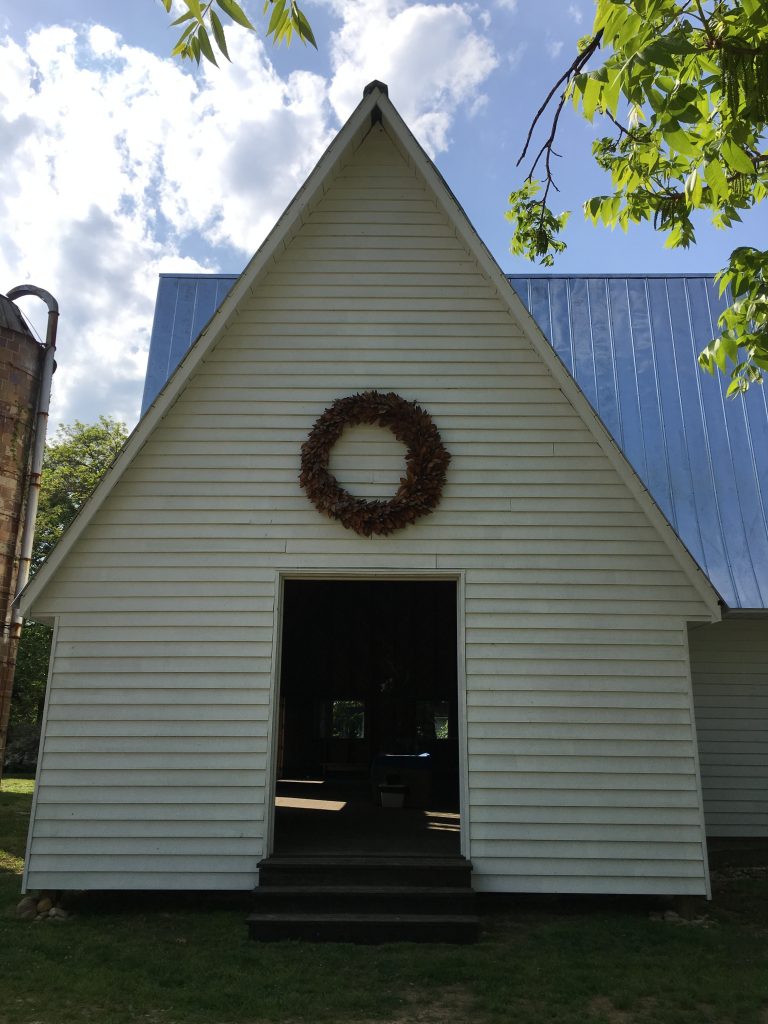
In Dianne’s words, “I appreciate a lifestyle that grounds me to home. My natural media, Merino wool and plant dyes, are nourished from the southern ground whose landscape inspires me. And my weaving mimics the pace of life here, slow and contemplative.”
Dianne found her passion for weaving while studying fashion design at VCU.How could the blankets Dianne weaves be anything but elegantly understated, when the sheep whose wool she shears live in a barn (above and below) which reflects that same aesthetic?
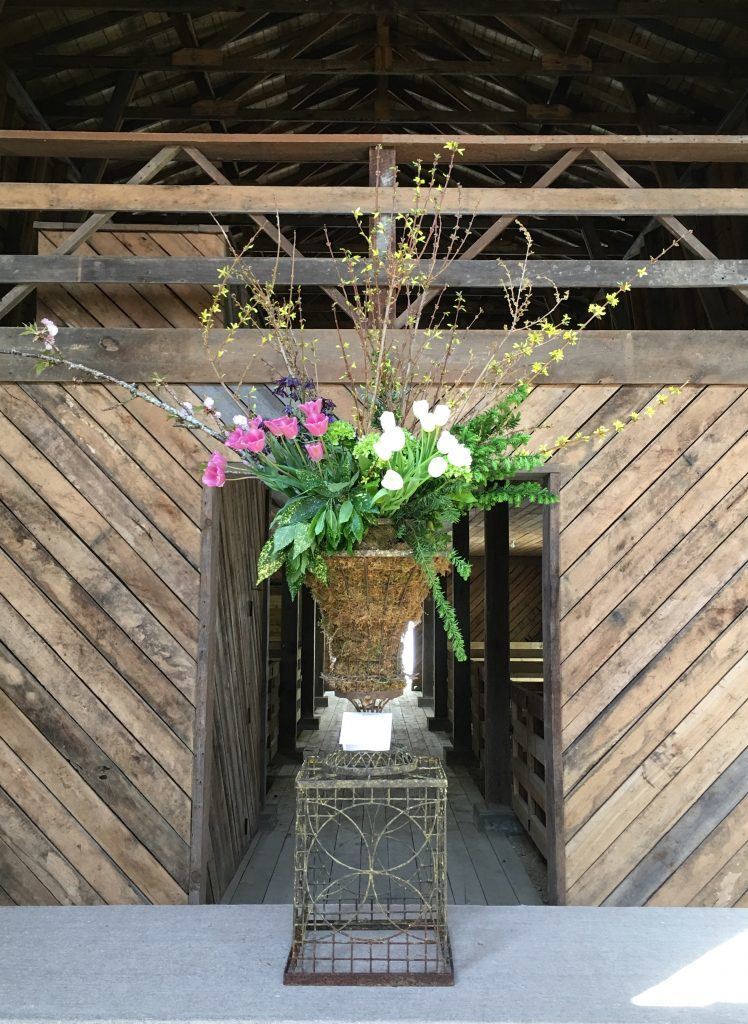
The Nordts tend a vegetable garden (below). Dianne uses plants grown on the farm to make the dyes for the wool.
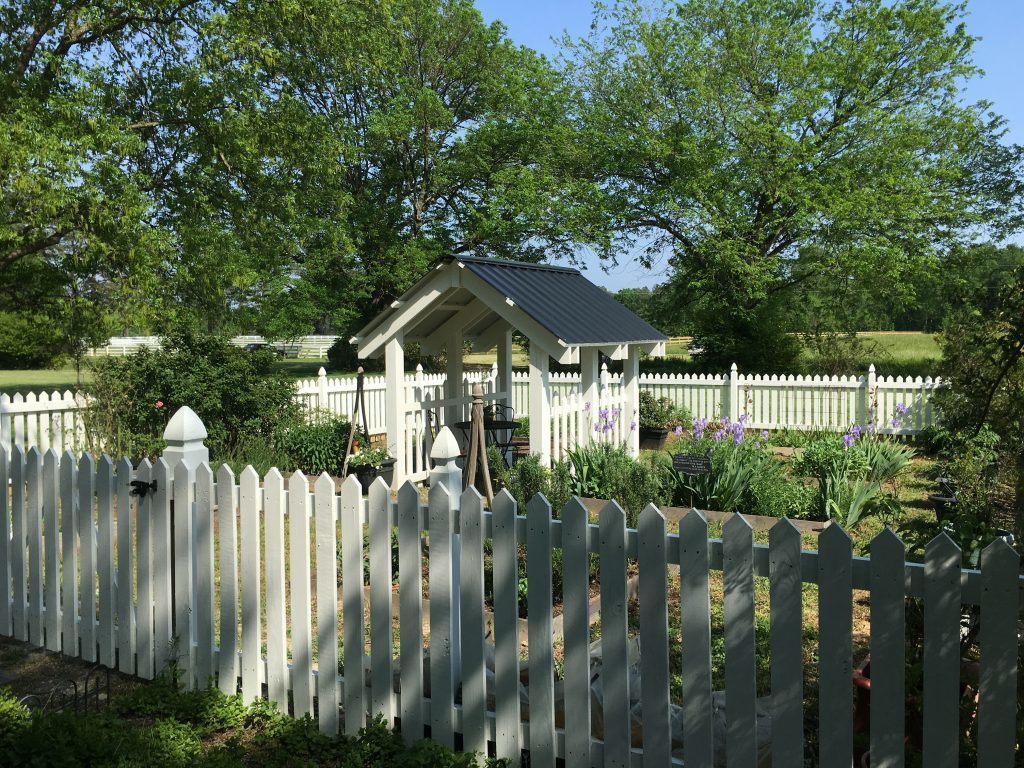
The Nordts also grow soybeans, corn, cotton, wheat and hay. Below, Boston Ivy (Parthenocissus tricuspidata) climbs a silo.
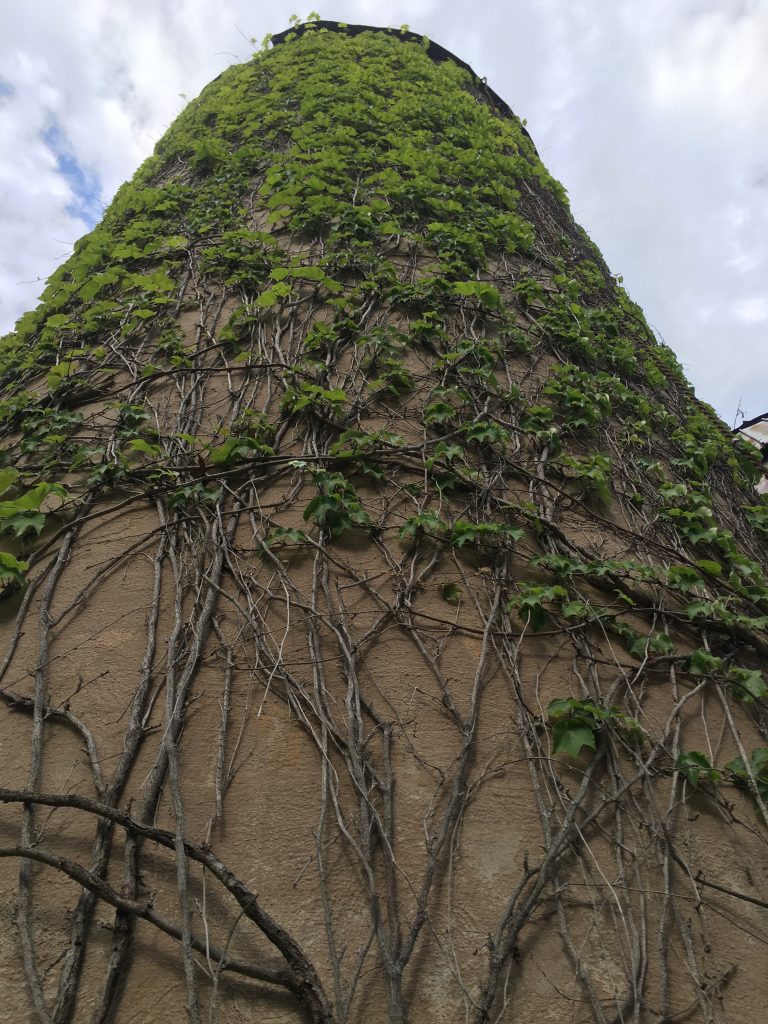
A barrel catches rain water from the roof of the stables, below.
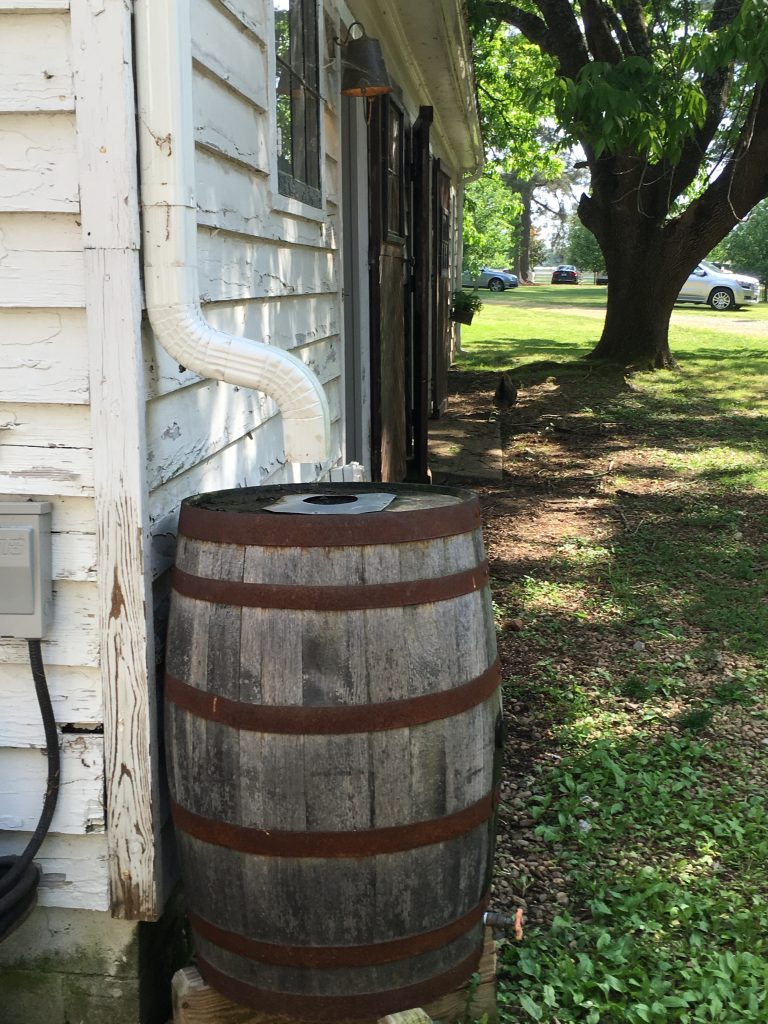
I left Riverview Farm grateful for the Nordt family’s devotion to preserving this historic sweep of land along the James. By nurturing the plants that have thrived there for centuries, planting to ensure the habitat continues to thrive in the future, continuing the centuries-old practice of farming the fields, and reinvigorating the time-honored craft of weaving hand-dyed wool, the Nordts are instilling in the next generation a love and respect for this increasingly fragile environment, and hopefully, a desire to pass it on to future generations of Virginians.
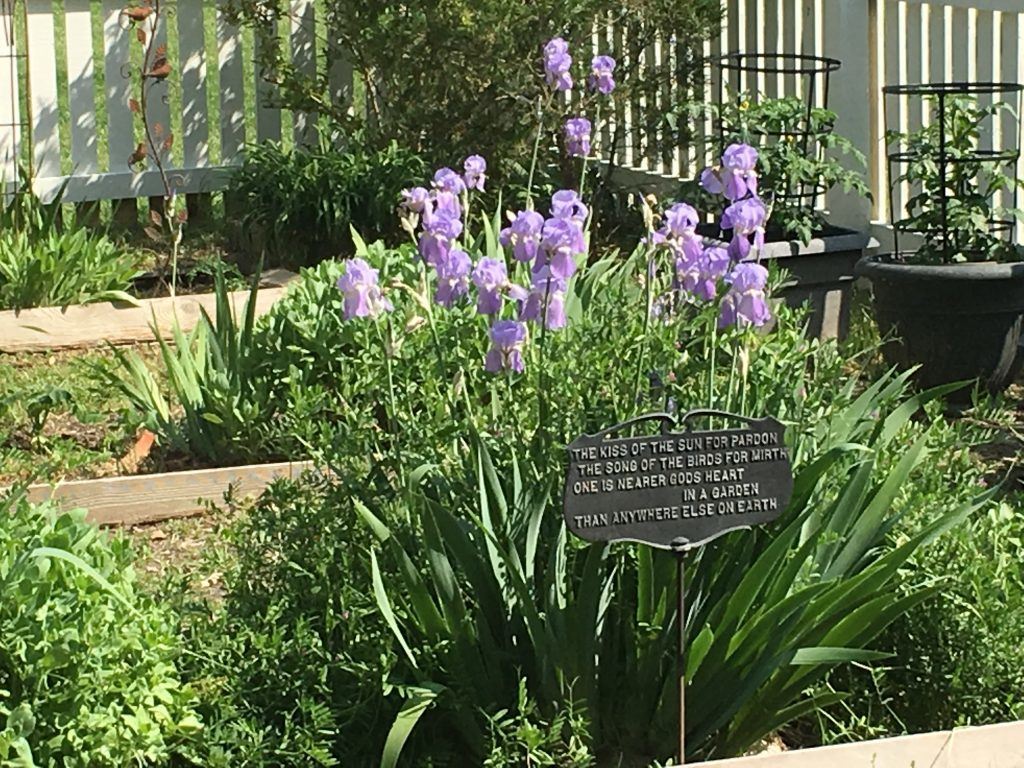
For more information about life at Riverview Farm, follow owner Dianne Nordt’s instagram postings, found at #nordtfamilyfarm.
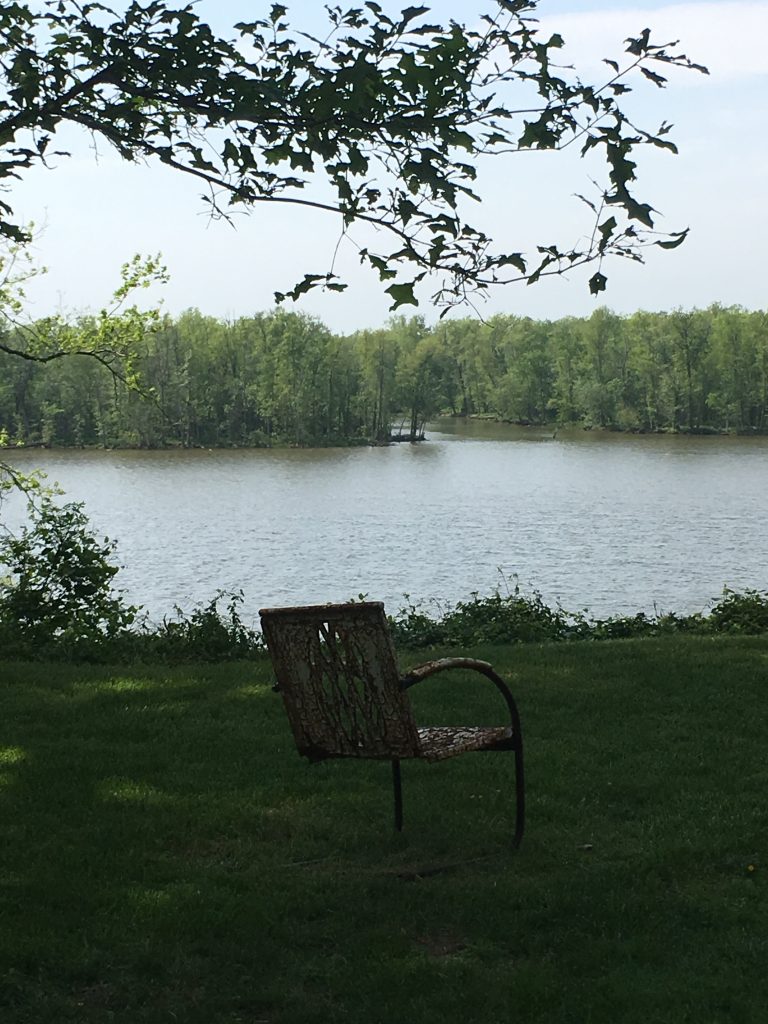
[custom-related-posts title=”Related Posts” none_text=”None found” order_by=”title” order=”ASC”]

